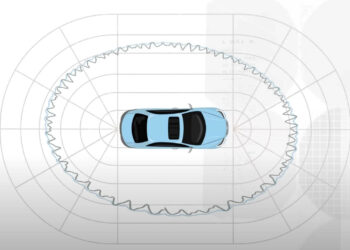Some week, huh? If you’re like me, you’ll welcome a little order amidst all the chaos. And this craving led me to watching a seven and a half minute video on how postal codes (“zip codes” in the US and the Philippines) are organized. What might surprise you is that they’re generally not based on geography, but rather on the location of the nearest postal sorting center. Each digit moves the mailed item further along by one sorting center down to the local post office and then out for delivery. That’s why having a first digit of 0 in the US covers locations in upper New England, but also New Jersey, as well as Puerto Rico and the Virgin Islands.
Except in Ireland. In Ireland, 35% of premises (over 600,000) have non-unique addresses due to an absence of house numbers or names. Which led in 2015 to the creation of a new postal code based on GPS locations, with each code specifying an exact location, rather than a series of sorting centers.
Would that all things in our lives could be as tidy as an Irish mailing address.
Discussion
4 Thoughts on "Design Matters: Why Ireland Has The Best Postal Codes"
It bothers me that the UK codes have variable numbers of letters and numbers.
See here for “How the US Postal Service reads terrible handwriting”
As I understand it, Irish postal workers hate the new system – down with this sort of thing!
It’s a nice solution to postcodes that helps the postal service but doesn’t help the end user much. They just can’t beat email which allows me to send to a particular person no matter where they live. Imagine if a postal system allowed you to send to a recipient ID instead of (or in addition to) a geographic location. If you put down both and there was a mismatch the system could hold the mail and ask the recipient to verify delivery address or return to sender if the recipient has moved. Postal services are already databasing recipient names and addresses – it would probably make everyone’s life easier if we could update our details in that database free of charge.
I wasn’t expecting an appreciation of Eircodes on SK.
Unlike scholarly publishing’s PIDs (DOI, ORCID, ROR) the Eircode system is proprietary, developed by Capita at an eye-watering EUR38m (approx EUR19 per address) and recently renewed until 2026 for EUR8m. Let’s hope they’re persistent. Perhaps they should have gone with DOIs. After a slow start, the boom in ecommerce/home deliveries in the pandemic, and their inclusion in Google Maps have made them invaluable.
Ironically, though, the postal service is probably the last to use Eircodes, given the local knowledge of the postmen and women. As the Irish Times reports,
“If there are two Paddy Reillys, a father and son, living
beside each other, the postman just determines that a
guitar is probably for the younger one, and the letter
from the pension company probably for the older.
Then they can swap if it is wrong.”
[https://www.irishtimes.com/news/consumer/eircode-comes-good-and-find-its-true-direction-1.4434094]



